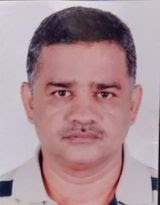हा पाठांतराचा विषय नाही…
सामान्याज्ञान आणि चालू घडामोडी (General knowledge & Current Affairs) हा नुकत्याच पदवी प्राप्त केलेल्या किंवा एक दोन वर्षात पदवीधर होणाऱ्या तुमच्या सारख्या मुला-मुलींचा विशेष कुतुहलाचा विषय असतो, असला पाहिजे. राज्य किंवा देशाच्या पातळीवरील स्पर्धा परिक्षांमध्ये भाग घ्यायचा आणि त्यामधून आपले करियर घडवायचे असे काहीतरी मनात योजले असेल तर ह्या विषयाचा अभ्यास करणे अनिवार्यच होऊन बसते.
सामान्यज्ञान किंवा चालू घडामोडींची माहिती पाठांतरातून मिळत नाही, ती सतत जागृत असल्यामुळे मिळते. आपला परिसर, आपला जिल्हा, राज्य, देश, आपली माणसे, त्यांचे राजकारण, समाजकारण, अर्थकारण, कला, साहित्य, आपली भाषा, संस्कृती, इतिहास, भूगोल आणि एकूणच जगाविषयी प्रेम, आपुलकी असेल तर मिळते.
आपण ज्या जगात जगतो ते कसे चालते, कसे विकसित झाले आणि कुठे चालले आहे, कुठे जायला हवे यासंबंधीचे प्रश्न तुम्हाला पडत असतील तर तुम्ही सहज हा विषय आत्मसात करू शकता. सामान्यज्ञान आणि चालू घडामोडी हा विषय म्हणजे एक अथांग सागर आहे. इतर कुठल्याही विषयापेक्षा अधिक वेगाने उत्क्रांत होत जाणारा विषय आहे. ७ अब्जांहून अधिक लोक असलेल्या या जगात अनेक पातळ्यांवर, अनेक उद्दीष्टांनी सतत काहीतरी घडत असते, त्यामुळे या विषयात मी अगदी अप-टु-डेट आहे असे कोणीच कधीही म्हणू शकणार नाही.
शब्दकोश
आपले सगळे ज्ञान आजही मुख्यतः इंग्रजीमध्ये आहे. ते मराठीमध्ये आणण्याचे मोठे काम अजून शिल्लक आहे. त्यामुळे एक इंग्रजी-मराठी आणि English to English शब्दकोश (dictionary) आणि Thesaurus सतत तुमच्या हाताशी असणे अत्यंत गरजेचे आहे. Thesaurus म्हणजे अशाप्रकारचा शब्दकोश ज्यामध्ये प्रत्येक शब्दाचे समानार्थी आणि विरुद्धार्थी शब्द दिलेले असतात. अर्थात आता इंटरनेटवर आणि अगदी तुमच्या मोबाईल मध्ये कितीतरी शब्दकोश उपलब्ध आहेत. परंतु त्यामध्ये दर्जा बघणे गरजेचे असते. ऑक्सफर्ड चा शब्दकोश आदर्श मानला जातो. त्याच्या अनेक आवृत्त्या आहेत. पॉकेट डिक्शनरी पासून अॅडव्हान्स्ड लर्नर्स डिक्शनरी[i] पर्यंत अनेक प्रकार आहेत. (जाता जाता हेही सांगायचे आहे की footnotes and endnotes - इथे दिलेले क्रमांक म्हणजे काय ते समजून घ्या आणि त्या तुमच्या लिखाणात वापरायला शिका[ii] यालेखातअसेएकूण३४ संदर्भ किंवातळटीपावापरलेल्याआहेत.)
मेरियम वेबस्टर ही दुसरा उत्तम शब्दकोश - १८२८ पासून अस्तित्वात असलेला. शब्दकोशांच्या जगात इंटरनेटने क्रांती घडवून आणली. इंटरनेटमुळे चित्र, चलचित्र आणि आवाजाचा (multimedia) प्रभावीपणे वापर करून शब्दकोश समृद्ध करता येतो. गुगलने ऑक्सफर्डच्या मदतीने स्वतःचा शब्दकोश सुरु केला आहे. विशेषतः मोबाईलवर तुम्ही हा वापरला तर शब्द आणि त्यांच्या अर्थावर आधारित प्रश्नमंजुषा सुरु होते - Word Coach. त्यामधून बऱ्याच नव्या शब्दांची ओळख होते आणि तुमची एकप्रकारे परिक्षाही घेतली जाते.
अॅटलास
शब्द आणि भाषेनंतर नकाशांची माहिती असणे अत्यंत गरजेचे आहे. त्यासाठी Oxford,[iii] Navneet,[iv] Longman[v] यापैकी कुठलाही एक अॅटलास जवळ ठेवा. गुगल मॅपचा वापर करून सतत शोध घेत रहा. नव्या शहराचा, जागेचा संदर्भ वाचनात, ऐकण्यात आला की तो गुगल मॅपवर जाऊन तपासायचा ही सवय लावून घ्या. Seterra Geography Games[vi] या साईटचा वापर करून नकाशांवर आधारित quiz सोडवा. sporcle.com या वेबसाईटवर अनेक प्रकारच्या प्रश्नमंजुषा (quiz) आहेत. त्यापैकी मला सर्वात आवडलेले “Can you name the countries of the world?”[vii] या quiz चा सराव करा. १५ मिनीटात १९७ देशांची नावे तुम्हाला सांगता आली तर तुम्ही हे quiz जिंकलात.
विश्वकोश - ब्रिटानिका, विकिपीडीया आणि मराठी विश्वकोश
शब्दकोश आणि अॅटलास नंतर ज्ञानकोशांचा किंवा विश्वकोशांचा म्हणजेच Encyclopedia चा क्रमांक लागतो. Encyclopedia Britannica[viii] वर प्रचंड आणि विश्वासार्ह माहिती तुम्हाला मिळेल. त्याचे paid subscription ही आहे. Wikipedia[ix] हा असाच उपयुक्त आणि अफाट ज्ञानकोश - यामध्ये तुम्ही सुद्धा भर घालू शकता. तुमच्या आमच्यासारख्या स्वयंसेवकांनीच हा मुक्त ज्ञानकोश उभा केला आहे. २००१ साली सुरु झालेला हा ऑनलाईन ज्ञानकोश[x] भाषंमध्ये उपलब्ध आहेत. इंग्रजी विकीपिडीयामध्ये आज घडीला ६४ लाख ५८ हजाराहून अधिक विविध विषयावरील लेख आहेत, मराठीमध्ये ८२ हजार लेख आहेत, रोज यामध्ये भर पडत जाते.
विकिपीडीया शिवाय वर उल्लेखिलेले यांचे अनेक उपक्रम आहेत. Wikipedia चे mobile verision[xi] उपलब्ध आहे.
“Wikipedia, free Internet-based encyclopaedia, started in 2001, that operates under an open-source management style. It is overseen by the nonprofit Wikimedia Foundation. Wikipedia uses a collaborative software known as wiki that facilitates the creation and development of articles. Although some highly publicized problems have called attention to Wikipedia’s editorial process, they have done little to dampen public use of the resource, which is one of the most-visited sites on the Internet."
-Britannica, The Editors of Encyclopaedia. "Wikipedia". Encyclopedia Britannica, 19 May. 2021, https://www.britannica.com/topic/Wikipedia. Accessed 9 May 2022.
(ह्याला citation म्हणतात - एखादा लेख, पुस्तक किंवा web link cite करण्याचे अनेक प्रकार आहेत उदा. MLA[xii], APA[xiii], Chicago manual of style[xiv] etc. Cite करणे म्हणजे एखाद्या लेखाचा लेखक, प्रकाशक, प्रकाशन वर्ष, लेखाची/पुस्तकाची आवृती, पृष्ठे इत्यादी बाबींची माहिती देणे).
सर्वात आनंदाची बाब म्हणजे काही वर्षापूर्वीपासून मराठी विश्वकोश इंटरनेटवर[xv] उपलब्ध आहे. त्यामुळे मराठी भाषेतून बरीच माहिती कोशाच्या स्वरूपात उपलब्ध झाली आहे. महाराष्ट्र शासनाने ही माहिती मोफत उपलब्ध केली आहे. छापील विश्वकोशाच्या खंडांची किंमत काही हजारांमध्ये होती आणि त्यामधील माहिती अद्यावत करण्याचे कोणतेच साधन उपलब्ध नव्हते. इंटरनेटवरील विश्वकोश सतत अद्यावत केला जातो.
भारताचे संविधान
भारताच्या राज्यघटनेची एक अद्यावत प्रत तुमच्याकडे असणे गरजेचे आहे. आता ते अगदी सोपे झाले आहे. भारत सरकारच्या संकेत स्थळावर[xvi] ती अनेक भाषांमध्ये उपलब्ध आहे.
- २६ नोव्हेंबर २०२१ चे संविधान - ४०२ पानांची इंग्रजी आवृत्ती[xvii] - pdf copy. (आज ही आवृत्ती उपलब्ध आहे. तुम्ही जेव्हा या लिंकचा वापर करून संकेतस्थळावर जाणार त्यादिवशी कदाचित अधिक अद्यावत आवृत्ती तुम्हाला मिळू शकेल)
- इंग्रजी-मराठी आवृत्ती - २०१४ ची आवृत्ती [xviii]- ९८ व्या घटनादुरुस्ती पर्यंतचे बदल यामध्ये समाविष्ट आहेत.
सोशल मिडीया
इंटरनेट क्रांतीमुळे उपलब्ध झालेली अनेक साधने आहेत - या लेखाच्या मर्यादेत त्यापैकी काही थोड्यांचाच फक्त उल्लेख इथे करता येईल. अधिक शोध तुम्हालाच घ्यायचा आहे. YouTube हे त्यापैकी सर्वात महत्वाचे साधन. रुचकर रेसिपींपासून तत्वाज्ञानासंबंधीच्या व्याख्यानांपर्यंत सर्वच इथे उपलब्ध आहे.
या तीन channels चा उल्लेख मी इथे करतो. रोजच्या बातम्यांवर आधारित कार्यक्रम इथे सादर केले जातात. त्यामधून प्रचंड माहिती मिळते. श्री. विनोद दुवा यांचेही एक चॅनल होते. ऐतिहासिक आणि जागतिक संदर्भ देत साध्यासाध्या घटनांचे विश्लेषण करणे ही त्यांची खासियत होती.[xxii] दुर्देवाने त्यांचा अलिकडेच मृत्यू झाला.
ज्याक डोरसी यांनी स्थापन केलेले Twitter[xxiii] ही अशीच ज्ञानाची खाण अाहे. Facebook किंवा Whatsapp इतके त्याचे सदस्य नसतील परंतु जागतिक पातळीवरील नेत्यांची Twitter accounts आहेत. डोनाल्ड ट्रम्प यांच्या काळात अमेरिकेचे शासन twitter वरून चालते की काय अशी शंका येण्याइतपत वापर वाढलेला होता. ट्रम्प आपले महत्त्वाचे निर्णय twitter वरून tweet करून जगासमोर आणायचे.
आपले सध्याचे पंतप्रधान श्री. नरेंद्र मोदी हे देखिल twitter चा उत्तम वापर करतात. त्यांच्या बरोबर सर्व पक्षांचे अनेक भारतीय नेतेही twitter वर आहेत. तुम्ही tweet करत असाल तर उत्तमच, तसे नसेल तर किमान एक खाते उघडून जगभरच्या नेत्यांना follow करून जगात काय चाललय त्याचा अंदाज घेण्याचा प्रयत्न करा. एलॉन मस्क यांनी अलिकडेट twitter ताब्यात घेण्याचा प्रयत्न चालू केला आहे. ४४ अब्ज अमेरिकन डॉलर्स[xxiv] अशी किंमत त्यांनी देऊ केली आहे.
प्रसिद्ध पत्रकार राजदीप सरदेसाई[xxv] यांचेही twitter account[xxvi] follow करण्यासारखे आहे. त्यांच्या व्यवसायाच्या निमीत्ताने ते जगभर फिरत असतात आणि त्यांना येणारे अनुभव अतिशय मार्मिक शब्दात मांडतात. २०१४ आणि २०१९ च्या निवडणुकांचे विश्लेषण करणारी त्यांची दोन पुस्तके वाचनीय आहेत. अलिकडे पुस्तके किंडल[xxvii] किंवा गुगल प्लेबुक्स[xxviii] वरही उपलब्ध असतात आणि अॅपच्या सहाय्याने ती मोबाईलवरही वाचता येतात.


भारताच्या जडणघडणीत आकाशवाणी म्हणजे All India Radio - AIR चे स्थान मोठे आहे. त्यांचे NewsOnAir [xxix],[xxx] हे मोबाईल अॅप अतिशय उपयुक्त आहे. भारतातील सर्व AM आणि FM channels यावर स्पष्ट आवाजात ऐकता येतात. सहसा यामध्ये काही अडथळा येत नाही. कामानिमीत्त चेन्नई मध्ये राहणाऱ्या बिहारी किंवा काश्मीरी माणसाला आपल्या भाषेतील रेडिओ ऐकता यावा यासाठी ही सोय करण्यात आली आहे अशा प्रकारची या अॅपची जाहिरात आकाशवाणी तर्फे केली जात होती. AM channels वर बातम्यांचा सतत मारा असतो परंतु त्यामध्ये सरकारी बाजू स्पष्ट होते.
आकाशवाणी सारखेच जागतिक पातळीवरील रेडीओ चॅनल आहे - BBC radio. यामध्ये बरेच चांगले कार्यक्रम ऐकायला मिळतात - World’s radio station ही त्यांची टॅग लाईन आहे.
Telegram हे असेच उपयुक्त अॅप आहे. त्याचा संस्थापक मूळचा रशियन, पुतिन यांच्या राजवटीला आव्हान देत त्याने रशिया सोडले. निकोलाय आणि पावेल दुवराव या बंधुंनी Telegram ची स्थापना केली. आज ही कंपनी ब्रिटीश व्हर्जीन आयलंड मध्ये नोंदणीकृत आहे. २०२१ च्या आकडेवारी प्रमाणे जगभरात ५० कोटीहून अधिक सदस्य आहेत. टेलिग्रामच्या सहाय्याने काही ठिकाणी मोठे उठाव झाले आहेत. [xxxi]
रोजची वर्तमानपत्रे
इंटरनेटवरील या साधनांशिवाय रोजची वर्तमानपत्रे - यामध्ये लोकसत्ता, Indian Express, Times of India, Economic Times, Business Standard, The Hindu, Mint, Hindustan Times आणि India Today, Frontline ही नियतकालिके यांचा समावेश होतो. अर्थात ही सर्व पुन्हा इंटरनेटवरही उपलब्ध आहेत. बहुतेक सर्वांचे Telegram channel आहे. त्यामधुन निवडक बातम्या highlight केल्या जातात. यामध्ये विशेषतः संपादकीय आणि त्याच्या बाजूचा कॉलम - ज्याला op-ed (opposite editorial or opinions and editorials page)[xxxii] म्हणतात, तो जरूर वाचत जा. लोकसत्तामध्ये संपादकीयाच्या पानावर रोज बरीच माहिती असते. Indian Express चे Explained[xxxiii] हे सदर चालू घडामोडींमधील विषय स्पष्ट करून सांगते. दि. ९ मे २०२२ रोजी Explained ची ५९५ पाने होती आणि प्रत्येक पानावर १० पेक्षा अधिक विषय मांडलेले होते.
वर्ल्ड फॅक्ट बुक
The World Factbook[xxxiv] हे अमेरिकेच्या गुप्तहेर संस्थेचे - Central Intelligence Agency CIA चे संकेत स्थळ -
“The World Factbook provides basic intelligence on the history, people, government, economy, energy, geography, environment, communications, transportation, military, terrorism, and transnational issues for 266 world entities.”
संपूर्णजगाचीसंकलितकेलेलीमाहिती, नकाशे, चित्रेतुम्हालाइथेपहायलामिळतील.
ओएसइंट
शेवटी आणखीन एक विषय मांडतो - OSINT - Open Source Intelligence. यावर एक स्वतंत्र लेख किंवा पुस्तक लिहीण्यासारखी परिस्थिती आहे. सर्वांसाठी खुल्या असलेल्या साधानांचा आधार घेऊन व्यक्ती, संस्था यांच्याविषयीची माहिती मिळवणे म्हणजे open source intelligence चा वापर करणे. याविषयीची अनेक पुस्तकेही उपलब्ध आहेत. या सुटीमध्ये आणि पुढच्या काळातही या विषयाचा अधिक शोध घ्या.
शुभराज बुवा
९ मे २०२२
संदर्भ
[i] https://www.oxfordlearnersdictionaries.com/definition/english/
[ii] जेव्हा तुमच्या लिखाणात तुम्हाला अधिक संदर्भ द्यायचे असतात तेव्हा footnotes चा किंवा endnotes चा वापर केला जातो. Footnotes किंवा तळटीपा प्रत्येक पानाच्या शेवटी असतात तर endnotes अर्थातच लेखाच्या शेवटी असतात. तसेच bibliography म्हणजे संदर्भग्रंथांची यादी - ही लेखाच्या शेवटी दिलेली असते. तुम्ही Microsoft Word किंवा त्यासारखे दुसरे काही software वापरत असाल तर त्यामध्ये bibliography जोडण्याची सोय असते.
[iii] https://www.amazon.in/Oxford-School-Atlas/dp/0190123656
[iv] https://www.amazon.in/Navneet-school-atlas/dp/812432140X
[v] https://www.amazon.in/Longman-School-Atlas-Revised-Vipul/dp/8131729079
[vii] https://www.sporcle.com/games/g/world
[viii] https://www.britannica.com/
[ix] https://en.wikipedia.org/wiki/Main_Page
[x] https://www.wikipedia.org/
[xi] https://play.google.com/store/apps/details?id=org.wikipedia&referrer=utm_source%3Dportal%26utm_medium%3Dbutton%26anid%3Dadmob
[xiv] https://www.chicagomanualofstyle.org/home.html
[xv] https://vishwakosh.marathi.gov.in/
[xvi] https://legislative.gov.in/constitution-of-india
[xvii] https://legislative.gov.in/sites/default/files/COI...pdf
[xviii] https://legislative.gov.in/sites/default/files/Savidhan.pdf
[xix] https://www.youtube.com/channel/UCuyRsHZILrU7ZDIAbGASHdA - ThePrint - Shekhar Gupta’s channel
[xx] https://www.youtube.com/c/thedeshbhakt
[xxi] https://www.youtube.com/channel/UC-CSyyi47VX1lD9zyeABW3w Dhruv Rathee channel
[xxii] providing context- म्हणजेच एखाद्या गोष्टीला संदर्भ देणे - त्या संदर्भात ती अधिक स्पष्ट करणे यासंबंधीचा हा लेख जरूर वाचा https://www.masterclass.com/articles/why-is-context-important-in-writing
[xxiii] https://twitter.com/home
[xxiv] ४४ अब्ज अमेरिकन डॉलर्स म्हणजे - three trillion four hundred four billion six hundred twenty-one million two hundred sixty-four thousand rupees.
[xxv] https://www.rajdeepsardesai.net/
[xxvi] https://twitter.com/sardesairajdeep
[xxvii] https://www.amazon.in/Kindle-eBooks/b?ie=UTF8&node=1634753031
[xxviii] https://play.google.com/store/books/
[xxix] https://play.google.com/store/apps/details?id=com.parsarbharti.airnews
[xxx] NewsOnAir या पद्धतीच्या लिखाणाला Camel Case म्हणतात - “Camel case (sometimes stylised as camelCase or CamelCase, also known as camel caps or more formally as medial capitals) is the practice of writing phrases without spaces or punctuation, indicating the separation of words with a single capitalized letter, and the first word starting with either case. Common examples include "iPhone" and "eBay". It is also sometimes used in online usernames such as "johnSmith", and to make multi-word domain names more legible, for example in promoting "EasyWidgetCompany.com".
Camel case is often used as a naming convention in computer programming, but is an ambiguous definition due to the optional capitalization of the first letter. Some programming styles prefer camel case with the first letter capitalised, others not.[1][2][3]
[xxxi] https://euromaidanpress.com/2020/08/27/how-telegram-social-media-help-fuel-protests-in-belarus/
[xxxii] https://en.wikipedia.org/wiki/Op-ed - “An op-ed, short for "opposite the editorial page" or as a backronym the "opinions and editorials page," is a written prose piece, typically published by a North-American newspaper or magazine, which expresses the opinion of an author usually not affiliated with the publication's editorial board.[1] Op-eds are different from both editorials (opinion pieces submitted by editorial board members) and letters to the editor (opinion pieces submitted by readers). In 2021, The New York Times—the paper credited with developing and naming the modern op-ed page—announced that it was retiring the label, and would instead call submitted opinion pieces "Guest Essays." The move was a result of the transition to online publishing, where there is no concept of physically opposing (adjacent) pages.”









